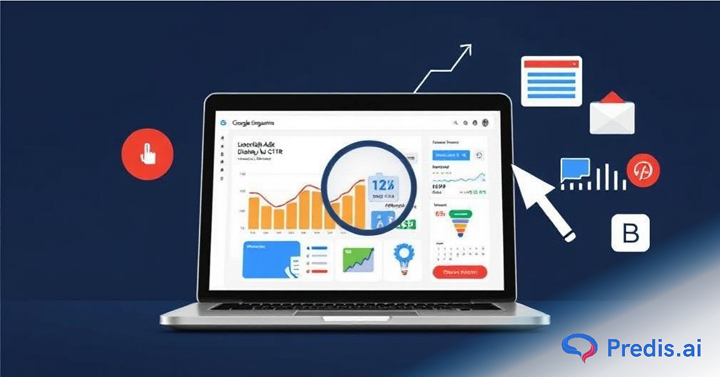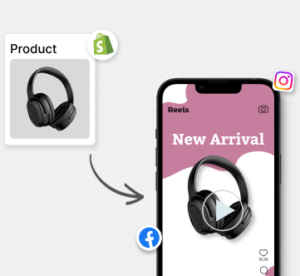An engaging and high-performing Google display ads campaign can be an absolute game-changer for businesses and marketers. When running a Google display ad campaign, the most important metric that determines performance is the CTR or click-through rate. A high CTR indicates a high-quality ad that is well-targeted and engages users, resulting in better results for businesses and marketers overall.
Thus, a high CTR is crucial for all marketers looking for affordable yet laser-targeted traffic that results in high conversion rates. Achieving this, however, is far from straightforward and involves plenty of planning and optimization.
In this article, we uncover various tried-and-tested tips, tricks, and best practices to craft such compelling ads, with precision targeting, that can improve Google display ad CTR while bringing targeted traffic to your site without draining your wallet.
Understanding The Basics
First things first, the key metric for performance in the Google display ads network is click-through rates. These measure the relevance and effectiveness of your ads and impact your overall cost-per-click and conversion rates.
The Google display ads network includes a wide variety of formats, from simple images to video, rich media, and interactive banners, which are displayed on millions of websites worldwide. To improve Google display ad CTR all these formats need to be used appropriately.
In addition to generating revenue and helping website owners monetize their traffic, the network goes out of its way to add value to users. It does this by promoting engaging ad content, with the key metric in this regard being the CTR.
Why Focus On CTR?
Focusing on CTR isn’t just about getting more clicks. It’s about understanding what works. A high CTR suggests that your ad resonates well with your audience, is well-targeted, and is compelling enough to encourage interaction. Moreover, Google rewards ads with high CTRs with better ad placements and lower costs.
A low CTR either means bad targeting options, which make your ads less relevant to users, or bad-quality creative that is not compelling enough for users to click on.
Either way, working to improve Google display ad CTR is a long, time-consuming process that involves extensive testing across a range of different creatives, targeting options, and more. It is considered to be an art, just as much as it is a science, something that requires creativity while applying tried and tested principles.
Transform text into engaging video ads with Predis.ai’s AI Text to Video Maker—create stunning video ads for Google Display Network in seconds! Convert simple text into captivating videos with voiceovers, music, and stock footage.
Refining Targeting Strategies
First, we will discuss ways to refine your targeting strategies. This means ensuring that your ads reach the right audience and that views are not wasted.
1) Leverage Audience Insights
Using Google Ads’ built-in audience insights tool can provide a wealth of information about who is interacting with your ads and how. Customize your audience segments based on demographics, interests, and behaviors to refine your targeting.
You can delve deeper into audience behaviors by analyzing engagement patterns such as time spent on your website, frequency of visits, and more.
Such granular data allows seasoned marketers to perform even more precise audience segmentations, ensuring that their ads reach target audiences with more pin-point precision, resulting in higher conversions and significantly better ROIs.
2) Contextual Targeting
Place your ads on websites that are relevant to the product or service you are advertising. This targeting uses keywords related to your ads to find the right places for them on the Display Network.
This is a great opportunity to perfectly align your placements with your product, intent, and target audiences. While it is unlikely that you will get this right from the get-go, with a few weeks of effective tracking and optimization, you should be able to nail your placements for good.
3) Remarketing
Remarketing is a powerful tool to improve Google display ad CTR by targeting users who have previously interacted with your website or used your app but didn’t convert. These are warm leads, more likely to engage with your ad.
Through engagement, users have hinted that they are interested in your product or service but weren’t in the right place or time to make a purchase. With extensive retargeting, you can continue occupying their mind space, eventually nudging them toward a conversion.
Retargeting efforts are known to result in a 161% increase in overall conversion rates, which is often the difference between a profitable campaign and a cash guzzler that needs to be shut down.
Designing Compelling Ads
Of course, targeting and placements are at the core of a display ad campaign, but the other half of the equation is your ad creatives, their many variances, and the results they each achieve.
1) Use High-Quality Images
An absolute no-brainer and yet one of the most common mistakes that people make with their Google Display campaigns is skimping on their ad creatives.
As a rule of thumb, use high-quality images that are crisp, clear, and visually appealing to best convey your message to viewers. You also need to stand out from the crowd and against the banner blindness that has taken over the internet recently.
Achieving this requires a lot of creativity, which requires some experience and trial and error to get it right. Consider using tools such as Predis.ai to quickly generate mock-ups and ad candidates without spending hours or 1,000s of dollars to hire a designer.
Create stunning Display Ads effortlessly using Predis.ai’s Google Display Ads Maker. Turn text into engaging Google Display Ads with AI.
2) Create Engaging Ad Copy
Keep your messages clear and concise. Use action-oriented language that prompts users to take immediate steps. Phrases like “Shop Now,” “Learn More,” or “Sign Up Today” create a sense of urgency and prompt action.
You should ideally develop several versions for this and run them all for a couple of days to gather sufficient data before narrowing down to the ad copy or creative that yields the best results and engagement.
3) Optimize For Mobile
With the majority of internet users on mobile devices, ensure your ads are responsive and optimized for mobile. They should load quickly, look good on small screens, and have clickable areas that are easy to interact with on touchscreens.
Even though nearly 60% of the global internet traffic shifted to mobile over a decade ago, most ad campaigns remain unoptimized for the medium, which is now one of the leading causes of low conversions and engagement.
Optimizing Bidding Strategies
Once you have your targeting and ad creatives in order, the next in line is to work on your bidding strategies. With the right approach, you can significantly lower your cost of customer acquisition while seeing robust conversions and engagement.
1) Choose the Right Bidding Strategy
Google ads offer several bidding strategies tailored to different goals. For improving CTR, consider using ‘Maximize Clicks’ as your automated bidding strategy to focus on getting as many clicks as possible within your budget.
Explore dynamic bid adjustments based on time of day, geographical location, and device type. This flexibility allows you to capitalize on peak times and locations where your audience is most active, thereby optimizing your budget for the best possible outcomes.
2) Adjust Bids For High-Performing Ads
Monitor which ads perform best and consider increasing their bids to maximize visibility. Conversely, lower the bids on ads that aren’t performing well to reduce costs.
This helps minimize ad spend on creatives and placements that aren’t converting well while allocating more funds to those that are, helping maximize overall ROI.
Monitoring and Adjusting Performance
Given how dynamic the advertising landscape is, no campaign, no matter how well it is set up, can be set and forgotten. It requires regular pruning and changes to be kept profitable, failing which it will run into losses over time.
1) Regular Reviews
Make it a point to check your ad performance reports on a regular basis, starting with your CTRs, conversion rates, and other crucial metrics. This helps you spot trends and identify issues before they become big, as well as ways to further improve your campaign and minimize losses.
2) A/B Testing
Never settle on a single ad format or copy. Continuously test different versions of your ads to see which ones perform better. A/B testing can provide actionable insights that can dramatically improve your CTR, making your campaign more profitable.
3) Use Analytics
Integrate Google Analytics with your Google Ads account to get deeper insights into how users interact with your ads and your website after clicking. This can help you better understand the customer journey and refine your strategies accordingly.
In the end, running successful online ad campaigns is all about analytics. You gather as much data as you can and then use it to optimize your performance better.

Wrapping Up
Improving your Google display ad’s CTR and performance doesn’t happen overnight. It requires good strategy, ongoing optimization, and continuous testing.
Keep experimenting with different ad designs, copies, and targeting options until you find what resonates best with your audience. With persistence and the right strategies, you’ll see your efforts pay off with higher CTRs, better ad placements, and more conversions.
Are you ready to revamp your approach and see those numbers climb? Dive in, tweak, test, and watch your Google display ads perform like never before!
Elevate your ad campaigns with Predis.ai's AI Ad Generator—design compelling ads effortlessly.Transform your marketing with AI—create stunning ads that captivate and convert!
Related Content,
















